This article belongs to a series of articles about MLOps tools and practices for data and model experiment tracking. In the first part, we explained why data and model experiment tracking was important, and how tools like DVC and Mlflow could solve this challenge. Today, we’ll see how Data Version Control (DVC) smartly manages your data sets for training your machine learning models on top of Git.
By Samson ZHANG, Data Scientist at LittleBigCode
What are we talking about? DVC is a MLOps tool that works on top of Git repositories and has a similar command line interface and workflow to Git. It is designed to tackle the challenge of data sets traceability and reproducibility when training data-driven models.
Why do we need DVC ?
All data-driven models require data to be trained. Managing and creating the data sets used for training data-driven models requires a lot of time and space. Depending on the project, there can be up to thousands of versions of the data set to train the models. This can quickly become muddled due to multiple users altering and updating the data which can greatly jeopardize the traceability and reproducilibity of experiments.
In your data scientist career, you probably experienced data versions tracking issues when exploring and cleaning your data set, just like me.
For instance, I often worked on computer vision problems with thousands of images/annotation files. Counting the raw noisy data, the cleaned data and the preprocessed data, there are already 3 different versions to keep. And that is still without keeping track of some processing steps results!
Without DVC, a possible approach would be zipping files and storing hashes (file content checksum), and locations in Git commits. The data set would be fully duplicated for each version. It would be complicated to update and to keep track of. Just imagine the work you would have to do each and every time you have new data to add or wrong labels to correct!
This iterative process on the data set can be applied to many data science projects and it is not scalable without proper tools.
DVC has been created to exactly handle this iterative process in an efficient way.
Why use DVC for data version management instead of other tools such as Git or Mlflow ?
Mlflow is not designed to track a lot of large files (for instance, thousands of images) as it does not optimize storage for file duplication. Tracking datasets version with Mlflow would be inefficient. Mlflow itself does not guarantee the reproducibility of a data set used during an experiment run, unless you save the whole data set during each run, which is not scalable.
Git is unsuited for large files versioning in general (especially for datasets). Furthermore, saving your data set with your source code can be a huge security breach as anybody that works on the code can access potentially sensitive data (even worse for public git repo).
Those are the main reasons that motivate the use of an additional type of tool for data versioning such as DVC for improving your ML experiments tracking experience. DVC complements Mlflow and Git in order to provide a complete ML tracking experience.
Technically, DVC is a file-versioning tool that can work with any type of data (image, text, video) as it saves files. But the latter does not mean that it is adapted to version complex data types for ML purposes such as large video files because DVC simply tracks file versions with hashes (content checksum). For instance, a few seconds modification to an 1h-long video file (several GBs) results in 2 full 1h-long video files stored which implies a lot of duplication.
How does it work ?
You can version datasets in your Git repository by only storing small *.dvc metafiles (text) tracked by Git commits (cf. figure 1). It has an optimized versioning capability like git by only storing the minimal quantity of information to describe the data across all the data set versions in a repository. The same file appearing in multiple data set versions is stored only once.
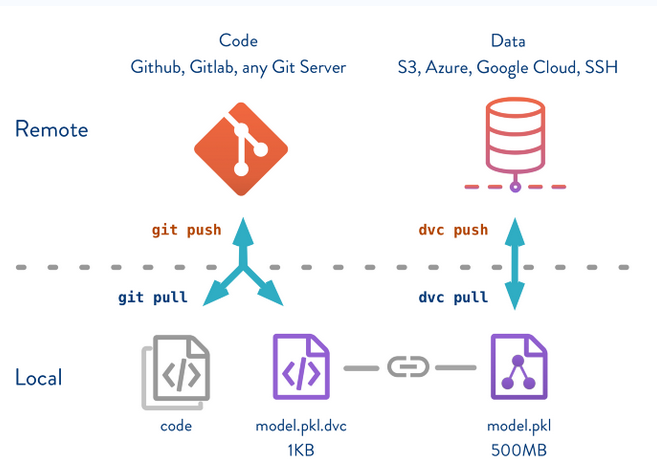
Figure 1. How DVC works. Source: DVC.org
Project structure
A DVC repository is a Git repository that tracks DVC files. Setting up a DVC repository and do data versioning is easy.
Let’s take a look at the composition of a DVC repository :
For a Git repository to be also be a DVC repository, there are only 2 elements needed:
►.dvc/ subdirectory at the project’s root. This directory mainly contains customizable config files. By default, it also contains the DVC repository cache;
►*.dvc files
DVC files (*.dvc) are the entry points for versioning data. They are metafiles used by DVC to point to the data in a storage space. DVC files and an URI of the data storage space (local file system, AWS, Azure, GCP…) are the only information needed for versioning data sets. You can think that *.dvc files are like indexes, they are light and easily versionable addresses that point to the actual data stored in a more suited storage space (cloud, local remote storage).
It means that *.dvc files have to be tracked by Git, in order to track different versions of a data set. Conversely, if a data set version pointed by a .dvc file is not tracked by Git, it can become inaccessible (it is not designed to be accessed without .dvc files) but the data will still exist in the storage.
Basic commands
Like Git, DVC is configurable (remote storage, scope) and has “add”, “push”, “pull”, “checkout” commands for managing your data files. DVC is compatible with all the main cloud providers: Google Cloud, Microsoft Azure and AWS S3, and it does not have any infrastructure requirements.
How DVC manages data set versions and avoids duplication
The local DVC cache (DVC Cache structure) contains all the versioned data sets without file duplicates between versions. This cache can be anywhere on the local system. A working copy of this cache is duplicated with an user-specified file link (copy, reflink, hardlink, symlink) dvc link types into the Git repository workspace for the files to be accessed by the project.
By default, the copy strategy is used. For more details about the file link type, check out the dedicated section “Configure your DVC cache” of this article.
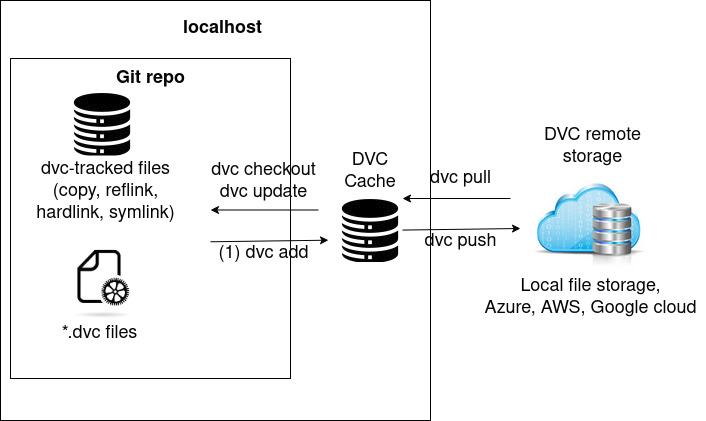
Figure 2. DVC workflow, cache and storage
In order to explain how DVC cache optimizes storage space by avoiding files duplication between different versions of a data set, let us look at an example:
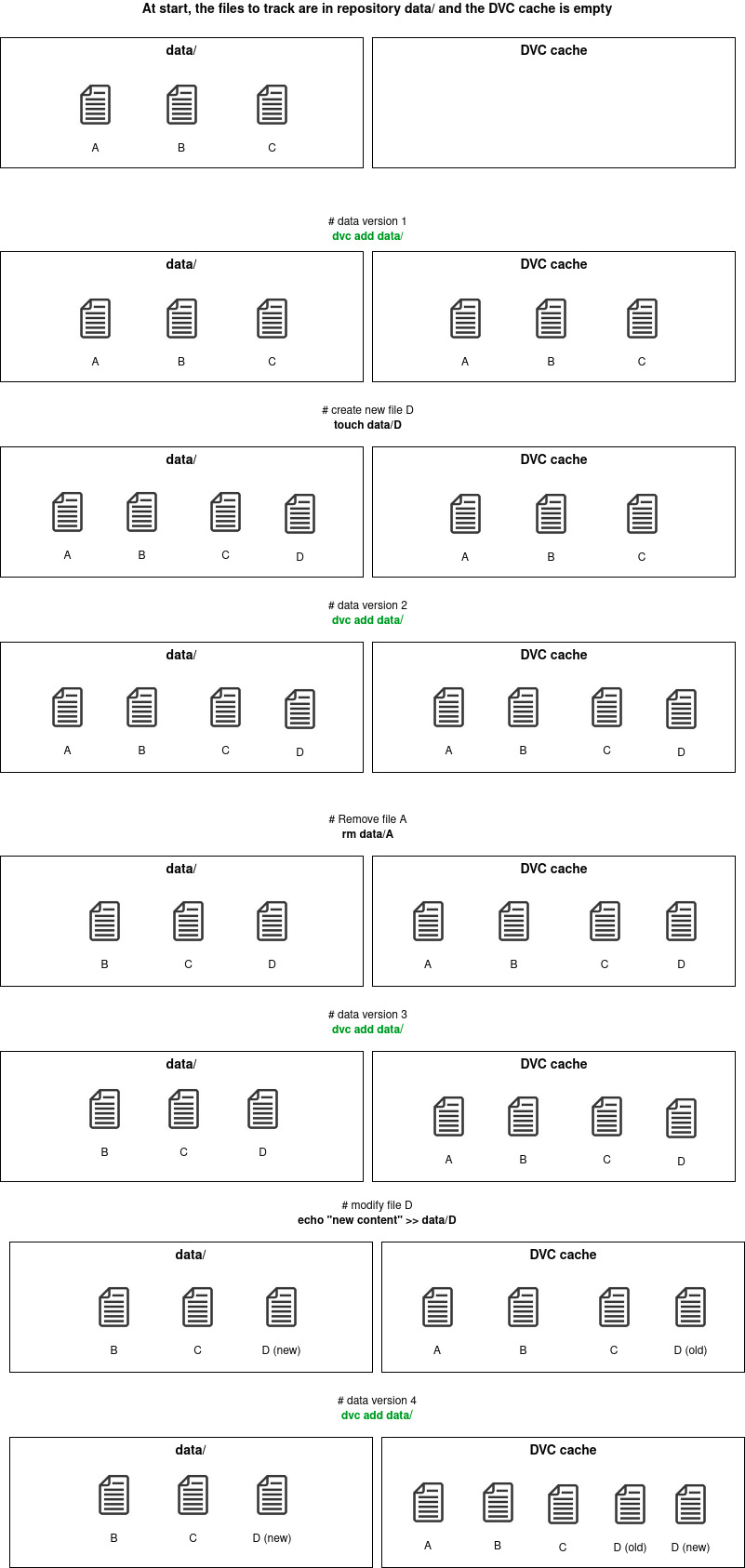
Figure 3. DVC cache workflow
Each “dvc add” command uploads a new version of the data set (cf. figure 3). Each file is saved only once (for any version) and the no-duplication is ensured by file checksum comparison between versions. An internal database maps each file to each data version it belongs to.
Even though DVC is built on top of Git, DVC does not have a history system like Git. There are no explicit branching logic and commit dependencies handled by DVC itself. DVC only reasons on file presence and content, by checking hashes, to determine data versions. The dependency logic between data versions is handled by Git history. It means that you can create different data set versions on different Git branches and DVC maps each file, ever tracked in the repository, to every commit/branches that tracks it.
DVC best practices
After some experimentation with DVC, there are few good practices I think one should pick up when using DVC:
• Use DVC only for data-related tasks such as data set versioning, data processing routines. Not for logging experiment metrics and model weights. Even though the DVC documentation indicates that those features exist with its versioning capability, DVC is not designed to do experiment runs performance comparison, unlike MLflow, without many tricks and saving unnecessary files to the code base.
• Use Data Registry whenever possible in order to centralize data sets that can be shared in different projects. A DVC data registry is basically a Git repository that only contains DVC files (no code) that can version as many data sets as your organization have. An example of data registry setup is developped in the next section of this article.
• Unless you explicitly want to share your project’s DVC configuration such as a remote storage URL for a data registry, never use global configuration (.dvc/config). Prefer your project’s private configuration .dvc/config.local instead by using the –local argument to your configuration-modifying commands. Most of the time, your configuration depends on your local workspace (cache location/type) and you might need to use secrets for cloud remote storage (azure credentials,…). There is no reason to use .dvc/config for it.
• Write descriptive Git commits when versioning data sets, otherwise it can become hard to track meaningful changes in the data sets. This applies to software engineering in general. • Configure DVC repository cache. Do not use default when possible. Use an external cache if you have limited storage resource in your Git repository workspace. If you do not need to edit your DVC-tracked files in place, change your cache type link to save space from copy (default) to reflink,hardlink,symlink Large Dataset Optimization. Most of the time, the best cache configurations are: {reflink,hardlink,symlink}+external cache dir on large disks for SSD(small)+HDD/SSD(large) hardware configuration. • Use DVC, Git hooks for common routine automation (post-checkout, pre-commit, pre-push). In a DVC repository, use “dvc install” command to set up hooks.
Go further in setting up your DVC projects !
Set up a data set registry
DVC is simple to use as it is a thin layer over git repositories. One can directly use an existing Git repository in order to build a DVC repository on top of it and do data versioning for the given git project. The given Git repo would be the main entry point for accessing data set versions. It can be enough for doing experimentation by yourself on a single project, but it would easily become inefficient when you want to share the data sets with other projects. In practice, datasets are often re-used in multiple projects. This is why you should set up a data registry (cf. figure 4) whenever possible.
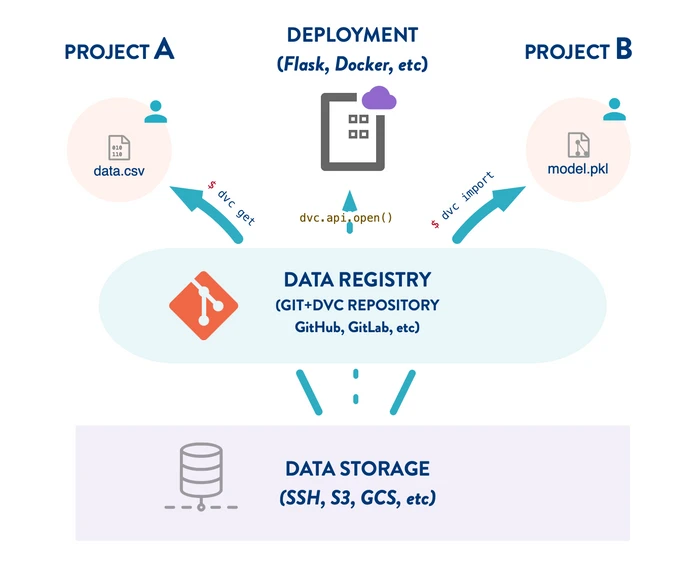
Figure 4. Data registry in DVC. Source : Data Version Control · DVC
1 • Let’s start from scratch. First create a new Git repository and initialize the dvc repository init on top of it. I recommend you creating a new conda environment for it.
(Highly recommended) Configure git hooks for DVC install
2 • dvc remote add Set up the remote storage for your DVC repository, it can either be a local file storage or a remote storage and commit it. (optional) install dvc dependencies for cloud remote storage if necessary (example for azure):
For local file storage :
This modifies the content of .dvc/config in your repository, that represents your project’s global configuration. You can check config for more configuration options.
For Azure storage, assuming you have enough credentials, the following commands modify your .dvc/config file for the remote URL and modifies the .dvc/config.local that stores credential only locally. You can find other examples for settings up your Azure storage here remote modify but it is recommended to use a SAS token.
3 • Commit your remote storage config
4 • Download your first data set version to track with DVC. Note that we are downloading data from a public DVC data registry using dvc cli but you can retrieve data however you want:
5 • Track your data set with DVC and git commit *.dvc files to version your data set:
Check the content of the cats_vs_dogs.dvc. It contains meta data useful to DVC in order to track your data set in the remote : 6 • Push your data set to the remote storage. At this point, you can already use this DVC repository in other projects. If you set up a cloud remote storage and push your Git repository to Github/Gitlab, you can even share your data registry with anybody:
7• Modify your data set by adding new images and create a data set version (like steps 3, 4 and 5):
if you check the status of your DVC repository with « dvc status », you will be informed of changes:
So add and commit the changes :
8 • Your data set registry is set up. Import/use data from a DVC data registry with get and import commands.
Configure your cache
The DVC cache is a content-addressable storage (by default in .dvc/cache), which adds a layer of indirection between code and data. (cf. DVC Cache structure). It is the DVC cache that stores the data sets in the local working environment.
Cache type
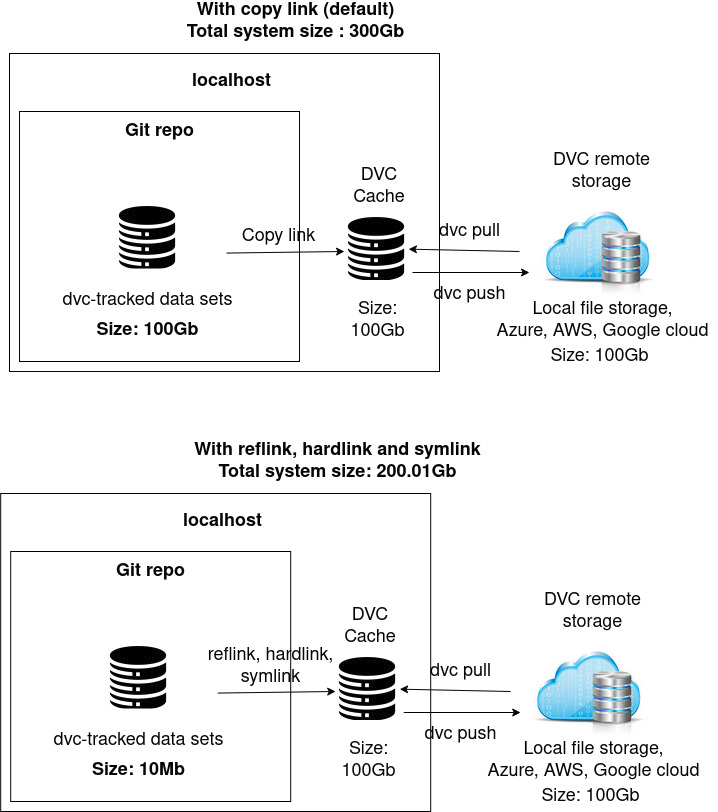
Figure 5. The impact of using different file link types on local storage space used with a 100Gb data set
Reflink, hardlink and symlink file linking types are particularly useful when you do not want to have the DVC project cache in the same subdirectory as your source code or if you are lacking space in your workspace partition (cf. figure 5 and Large Dataset Optimization). These file link types allow to save space. Usually, you will not work in an environment that provides reflink. These link types avoid having your DVC-tracked data set duplicated both in your cache and in your local git repository.
Most of time, for large data sets (>1Gb), you would want to use reflink, hardlink and symlink, although in-place edition is not available for hardlink and symlink. Depending on the task you are doing on the data set, you might want to edit the data in place, for instance manual data preprocessing or label fix. In this case, an editable link type should be preferred such as reflink or copy over hardlink and symlink.
You can always switch between different cache types depending on the stage of your machine learning project.
For instance If you need to manually edit your data in place, switch back to an editable link type checkout
When you do not need to edit your data set in place manually anymore or wish to move on to other stages of your project (training, evaluation), just switch to one of the lighter links to save space:
Cache location
Most of time, we are running machine learning projects on our laptop or desktop with multiple physical disks and limited resources. Usually SSD for fast I/O access where your code is and a HDD with large storage space for your data sets.
By default, the cache will be at the root of your git repository.
If you have configured a copy cache type for your project, your cache can take a large space of your disk. You might need to switch your cache type to a lighter one : reflink, hardlink or symlink.
Or you can just move your cache to another partition that has more resources:
About data set merge conflicts with DVC DVC tracks data set versions by leveraging Git’s versioning functionality. When it comes to merge conflicts, DVC does not have a built-in conflict resolution capability, so DVC also relies on git for conflict resolution. As we know, we only track *.dvc files with Git which means when there are merge conflicts, only meta files are compared which is often insufficient as the data sets versions are not compared. An example of *.dvc file conflict when merging :
The 3 situations we will commonly face
In order to illustrate, let’s say that 2 people P1 and P2 are working together on a machine learning project with an image data set. P1 works on branch B1 and P2 works on branch B2. The initial data set data/ (tracked by data.dvc) they are working on is the D1 version:
• First situation: only one of P1 and P2 modifies the data set. P1 modifies the data set and creates a version D2 of the data set on branch B1. P2 finishes working on a new feature and he did not modify the data set D1. P2 needs to merge B1 into B2 and resolve the conflict on data set versions difference. As only one of the branches modified the original D1 data set, P2 can just replace its version of data.dvc (in branch B2) by branch B1’s version.
• Second situation: both P1 and P2 only add non-overlapping images to the data set. P1 only adds new images to the data set D1 and creates D2 on B1. P2 also only adds new images to the data set D1 and creates D3 on B2. Furthermore, the image subsets they both added are disjoint. In this case, the merger can use Git drive merger DVC: Merge conflicts, append-only data set
• Third situation: both P1 and P2 modifie the data set (removal, addition, modification). P1 modifies the data set and creates a version D2 of the data set in branch B1. P2 also modifies the data set D1 and creates a version D3 in the branch B2. P2 needs to merge B1 into B2 and resolves the conflict on data set versions difference between D2 and D3. Here no assumption is made about the type of modifications to the data set, there can be removals, additions and modifications to any file of the data set. If you want to actually merge all the modifications in both branches, this is the trickiest situation. Neither git nor DVC can directly help. You have to manually merge the data sets.
About hyper-parameters tracking with DVC
DVC can also track metric files and hyperparameters, but MLflow is more suited to do so. For instance, DVC can do experiment results tracking by commiting metrics files (to DVC and git repo) and compare different versions (different commits) of a metric file using DVC Studio. Usually one might want to reduce the number of tools used as much as possible not want to duplicate the results with multiple tools such as Git repository (DVC) and in a remote server (Mlflow).
Furthermore, DVC and Mlflow have different approaches concerning metrics versioning:
- DVC tracks experiment metrics with a commit after model training/results generation;
- Mlflow tracks experiment results using the present commit used for training the models.
DVC’s approach is lighter than Mlflow’s for metrics tracking as DVC saves metrics files directly to the Git repo unlike Mlflow that saves metrics to a remote server. That being said, both approaches are conflicting when used at the same time for metrics tracking. It would mean that Mlflow tracks an experiment at commit N and the results would be tracked by DVC in commit N+1 which is not practical. Mlflow has the advantage of having an auto-logging functionality that makes metrics tracking effortless and transparent (in addition to logging artifacts among other features). With DVC, one would need to manually handle metrics logging to files which is inconvenient.
For the sake of simplicity and because of this series of articles is focused on experiment tracking using DVC and Mlflow, I would recommend using Mflow for metrics tracking over DVC. However, one should know that it is technically possible to track experiment metrics with DVC (with some effort).
Conclusion
DVC is a lightweight file versioning tool built on top of Git versioning capabilities designed for versioning data sets. It has an optimized cache system that avoids file duplication between different data set versions. Using a third-party tool like DVC allows to decouple raw data sets used for training machine learning models from the code by commiting small metafiles that describe the data sets tracked by a Git repository. DVC can also be used for data preprocessing pipeline. Its data set registry functionality is particularly useful for managing data sets sharing between different data science projects.
A summary of DVC features, pros & cons:
This article belongs to a series of articles about MLOps tools and practices for data and model experiment tracking. Four articles are published :
PART 1 (Click here) : Introduction to data & model experiment tracking
PART 2 (this article) : MLOps: How DVC smartly manages your data sets for training your machine learning models on top of Git ?
PART 3 (soon available) : MLOps: How MLflow effortlessly tracks your experiments and helps you compare them ?
PART 4 (soon available) : Use case: Effortlessly track your model experiments with DVC and MLflow
Feel free to jump to other articles if you are already familiar with the concepts !




Recent Comments